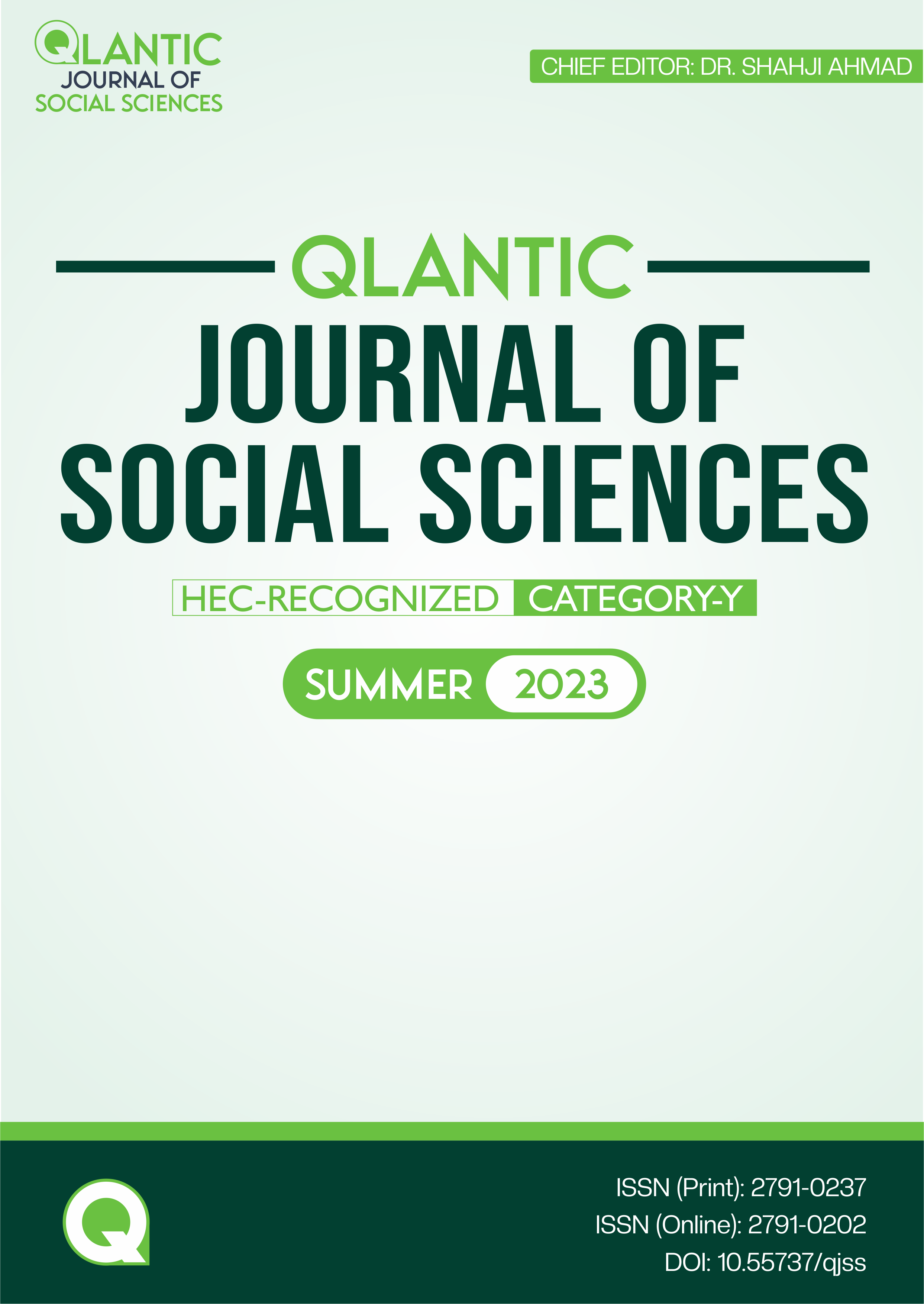Impact of COVID-19 on Remittances and Economic Well-Being: A Case Study of District Peshawar
DOI:
https://doi.org/10.55737/qjss.954175659Keywords:
Covid-19, Remittances, Economic Welfare, PeshawarAbstract
This study examines the impact of the COVID-19 pandemic on remittances and the economic well- being of households in district Peshawar. Due to rapid spread of the pandemic nationwide, the governments of almost all countries, in response to this, ordered a countrywide lockdown. Most migrants are from low and middle-income countries. Therefore, they are the ones severely affected. For this purpose, data was collected from the remittances recipient households from the district of Peshawar. To find the impact of a decline in remittances on the overall quality of life, six models were estimated using the Ordinary Least Square method. Thus, after estimation, it is concluded that the Covid-19 pandemic has a major impact on remittances and has a substantial impact on the economic well-being of the household through the decline in remittances. According to the results of the study, it is suggested that the government should develop that type of long-term strategy. That is, by application of these particular policies, the utmost affected clusters get income sustenance for some period of time.
References
Amega, K. (2018). Remittances, education and health in sub-Saharan Africa. Cogent Economics & Finance, 6(1), 1516488. https://doi.org/10.1080/23322039.2018.1516488
Cohen, J. H. (2011). Migration, remittances, and household strategies. Annual Review of Anthropology, 40(1), 103-114. https://doi.org/10.1146/annurev-anthro-081309-145851
Chowdhury, E. K., Dhar, B. K., & Gazi, M. I. (2022). Impact of remittance on economic progress: Evidence from low-income Asian frontier countries. Journal of the Knowledge Economy, 14(1), 382-407. https://doi.org/10.1007/s13132-022-00898-y
Hua, T. X., Kessels, R., & Erreygers, G. (2022). The impact of remittances on saving behaviour and expenditure patterns in Vietnam. Economies, 10(9), 223. https://doi.org/10.3390/economies10090223
Khan, S. U., & Jehangir Khan, M. (2016). The impact of remittances on child education in Pakistan. THE LAHORE JOURNAL OF ECONOMICS, 21(1), 69-98. https://doi.org/10.35536/lje.2016.v21.i1.a3
Murakami, E. (2022). Immediate impacts of the COVID-19 pandemic on household economic activities and food security in Tajikistan. Economics of Disasters and Climate Change, 6(2), 259-291. https://doi.org/10.1007/s41885-021-00104-4
Murakami, E., Shimizutani, S., & Yamada, E. (2020). Projection of the effects of the COVID-19 pandemic on the welfare of remittance-dependent households in the Philippines. Economics of Disasters and Climate Change, 5(1), 97-110. https://doi.org/10.1007/s41885-020-00078-9
Orozco, M., (2020). Migrants and the Impact of the COVID-19 Pandemic on Remittances, Inter-American Dialogue. United States of America. https://policycommons.net/artifacts/1565364/migrants-and-the-impact-of-the-covid-19-pandemic-on-remittances/2255148/ on 05 Oct 2022. CID: 20.500.12592/mwqb29
Poordad, F., Felizarta, F., Asatryan, A., Sulkowski, M. S., Reindollar, R. W., Landis, C. S., Gordon, S. C., Flamm, S. L., Fried, M. W., Bernstein, D. E., Lin, C., Liu, R., Lovell, S. S., Ng, T. I., Kort, J., & Mensa, F. J. (2017). Glecaprevir and pibrentasvir for 12 weeks for hepatitis C virus genotype 1 infection and prior direct‐acting antiviral treatment. Hepatology, 66(2), 389-397. https://doi.org/10.1002/hep.29081
Sirkeci, I., Cohen, J. H., & Ratha, D. (Eds.). (2012). Migration and remittances during the global financial crisis and beyond. World Bank Publications. https://doi.org/10.1596/978-0-8213-8826-6
Salik, K. M. (2020). Policy review remittances and COVID-19: Is Pakistan ready for a likely decline in flows. Islamabad: Government of Pakistan. 01-08. https://sdpi.org/assets/lib/uploads/uploads/2020/04/policy-review-Remittances-and-COVID-19-01-04-2020.pdf
Yamada, E., SHIMIZUTANI, S., & MURAKAMI, E. (2022). Remittances, household welfare, and the COVID-19 pandemic in Tajikistan. Asian Development Review, 39(02), 147-174. https://doi.org/10.1142/s0116110522500159
Zhunio, M. C., Vishwasrao, S., & Chiang, E. P. (2012). The influence of remittances on education and health outcomes: A cross country study. Applied Economics, 44(35), 4605-4616. https://doi.org/10.1080/00036846.2011.593499
Zhang, L., Chen, Y., Lyulyov, O., & Pimonenko, T. (2022). Forecasting the effect of migrants’ remittances on household expenditure: COVID-19 impact. Sustainability, 14(7), 4361. https://doi.org/10.3390/su14074361




